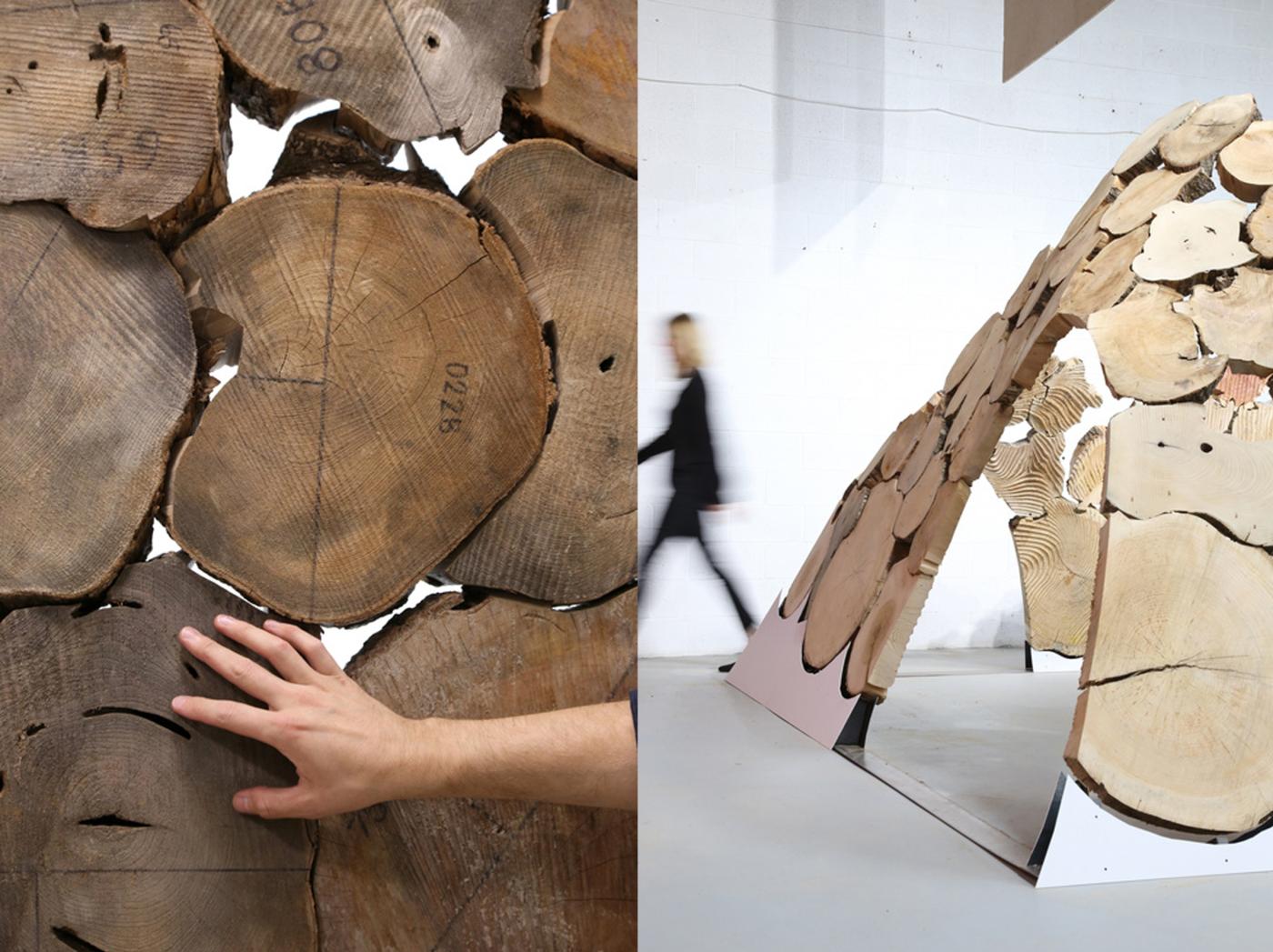BEFORE BUILDING LABORATORY
ABOUT THE BEFORE BUILDING LABORATORY —
We engage emerging technologies to work with natural materials and processes in new ways, reframing the relationship between biology, technology, and authorship. We seek to advance the accessibility of computation and robotic construction, leveraging democratized and consumer-grade technologies as well as inventing and building low-cost ground-up construction systems. Current projects focus on rapidly renewable biomaterials, including wood, bamboo, grass, various invasive plant species, and hemp.
LAB DIRECTORS —
Katie MacDonald, AIA NCARB, Assistant Professor, Architecture [kmacdonald@virginia.edu]
Kyle Schumann, Assistant Professor, Architecture [schumann@virginia.edu]
CURRENT RESEARCH PROJECTS AT THE BEFORE BUILDING LABORATORY —

TANGENTIAL TIMBER
Tangential Timber advances circular construction, customization, and democratization of technology by (1) developing a structural application for carbon-sequestering, non-linear wood, (2) piloting methods for adapting designs to non-standard material stock, and (3) lowering the cost and data intensity of digital imaging techniques. Non-linear wood is an underutilized material, available globally but limited in use due to the constraints of sawmilling. Tangential Timber defines a methodology in which logs that are curved, irregular in cross section, or otherwise unfit for lumber, are cut into cross sections, cookies. A low-tech, parametric digital imaging workflow was developed in which cookies are photographed and traced in 2D, then translated into 3D models. The digital cookies are sorted across a designed form, then inscribed with a set of joints. Fabrication requires minimal part reduction with a 5-axis waterjet. CNC routing adds surface continuity across a patchwork of irregular structural blocks. This timber masonry system is designed for disassembly: structural blocks are joined with minimal hardware, allowing for assembly, disassembly, and reuse.
Project Team: Kyle Schumann (UVA, Architecture, PI), Katie MacDonald (UVA, Architecture, PI), Abby Hassell (UVA, Architecture alumna, Project Manager)
Research Assistants: Cecily Farrell, Alex Hall, Caleb Hassell, Dillon McDowell, Sonja Bergquist, Sophie Depret-Guillaume, Abbey Partika, Russell Petro, Emily Ploppert, Jonathan (Yianni) Spears, Jolie Talha, Annabelle Woodcock
Funding: UVA Jefferson Trust Flash Funding, UVA Center for Global Inquiry and Innovation Faculty Global Research with Undergraduates Grant
Awards: Architect Magazine R+D Award, 2022; The Architect’s Newspaper Best in Digital Fabrication Award, 2022; AIA Central Virginia Bi-Annual Design Awards, Honor Award in Architecture, 2022
Learn more about this project.

MASS GRASS
Mass Grass seeks to advance applications for the common, abundant, and rapidly-renewable poaceae (grass) family as material which grows globally and with which nearly the entire plant can be utilized, as compared to the many offcuts of timber. Historically, poaceae has been used in thatch roofing and bundled, vernacular structures, while modern applications are limited to lightweight composites, acoustic panels, and insulation. With the exception of bamboo, the potential of grasses has been overlooked due to perceived shortcomings and lack of test methods needed to characterize small-diameter fibers which are highly anisotropic, fragile, and difficult to grip.
This research aims to develop a comprehensive framework for characterization of poaceae and poaceae-based composites and pilot structural applications of this material. The project brings together a multidisciplinary team of four scholars/disciplines to leverage and synthesize well-established elements of composite mechanics, structural engineering, environmental science, and architectural design.
Project Team: Katie MacDonald (UVA, Architecture, PI), Marek-Jerzy Pindera (UVA, Engineering, PI), Jose Gomez (UVA, Engineering, PI), Deborah Lawrence (UVA, Environmental Sciences, PI), Kyle Schumann (UVA, Architecture), Brandon Dennis (UVA, Architecture, Project Manager)
Research Assistants: Ephrata Johannes, Kristopher Kollias, Rachel Lee, Reagan McCullough, Brandon Meinders, Liv Orlando, Elizabeth Tatham, Julia West, Heze Chen
Funding: UVA 3 Cavaliers
SUPPORTED COURSES —
The Before Building Laboratory supports courses in the Department of Architecture connecting curriculum and research. These courses include:
Advanced Research Studios (graduate and undergraduate) and Design Thinking Studios (undergraduate).
These studios, that take on distinct semester-long projects, emphasize a range of topics connected to the Before Building Laboratory including hands-on fabrication, protoyping, and materials research through design-build pedagogy. Select studios also integrate the mandate for environmental ethics across architecture, construction, planning and policy, considering aspects of maintenance and decommissioning of buildings.
RESEARCH AFFILIATIONS —
Before Building affiliated research partners are also leading innovative work in the areas of biomaterials:
UVA Sawmilling
